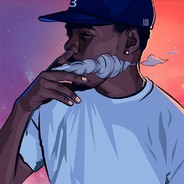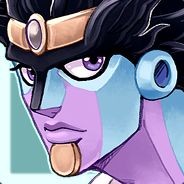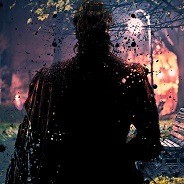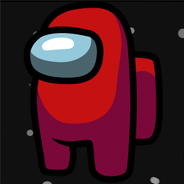Решите соч по английскому !Reading Read this passage and answer the questions that follow.
Today we have many ways to tell time. Watches, clocks, cell phones, and computers all tell the time. This passage is about the history of different ways of telling time and its importance.
What Time Is It?
Believe it or not, there was a time when humans were not concerned with the exact time of day. There were no clocks or watches. Instead, their daily activities were guided by the rising and the setting of the sun. As societies became more organized, the idea of "time" grew in importance.
Among the earliest initiatives to mark time was the shadow clock, which used the sun’s light to cast a shadow on a specially-marked surface. This led to the sundial. In Egypt, there is a shadow clock that dates back to the 8th century. This timepiece was useful, but it could not tell time when there was no sun. It was clear that some other form of timekeeping had to be developed.
There were several devices created to supplement or replace sundials. One such device was the notched candle, which let people calculate the time by looking at how far down the candle had burned. The Chinese came up with a somewhat similar contrivance by burning a knotted rope.
Some ancient people used a water clock known as a "clepsydra." The clepsydra
determined time by measuring the flow of water dripping from a bowl or vessel. As the water level rose or fell in the bowl, markings on the inside of the bowl would indicate the time. Another perhaps more familiar timepiece was the hourglass. The hourglass operated by having sand trickle through the small opening separating the top section of the glass from the bottom section. When the bottom section was full, an hour had passed.
These early efforts to tell time served a need, but none of them offered a precise measure of time. With the introduction of the first weight-driven clock in 1286, the technology to develop more accurate means of keeping time had begun. By the mid-1300s, an astronomer and physician named Giovanni de’ Dondi completed an early astronomical clock. He produced a seven-sided clock whose dials showed the sun, the moon, and the known planets. In addition to the 24 hours, it showed the times of sunrise and sunset, religious holidays, and the cycles of the moon. His "astrarium" was a remarkable advance over previous timepieces. However, it wasn’t until 300 years later, in 1650, that the first clock using two hands to tell the time was made.
Through the next centuries, numerous changes took place in the clock industry. Some clockmakers produced clocks that were works of art with beautiful gilt figures surrounding the clock faces. Others refined the size all the way down from the dimensions of huge clocks in bell towers to those of today’s wristwatches. Power sources to control the clock mechanisms changed, too – from coil springs to quartz.
The greatest breakthrough in timekeeping occurred in 1999. The United States National Institute of Standards and Technology (NIST) introduced the atomic clock. This clock has paved the way for global positioning systems (GPS) to help in the navigation systems used in today’s automobiles. Just how accurate is this new clock? It is the most accurate clock in the world. In 20 million years, it will neither gain nor lose one second as it tells time.
Even for a society obsessed with schedules and doing things or being places promptly, the atomic clock may even be more than we need just to be on time!
1. Thousands of years ago, people would base their activities upon the
A. sound of the rooster.
B. amount of work to be done.
C. phases of the moon.
D. rising and setting of the sun.
2. The author attempts to
A. convince readers to buy a new kind of clock.
B. tell the story of how the atomic clock was built.
C. challenge readers to find a better way to tell time.
D. describe different ways people have told time.
3. What was the oldest form of timekeeping?
A. clepsydra
B. atomic clock
C. astrarium
D. shadow clock
4. How did the weight-driven clock change the science of telling time?
A. It allowed clock makers to create beautiful clocks.
B. It allowed timepieces to become hand-held.
C. It marked the beginning of new technology.
D. It marked the end of using the sun to tell time.
5. The atomic clock is
A. not built yet.
B. dangerous.
C. outdated.
D. precise.
6. What was the biggest advance in timekeeping?
A. the sundial
B. the atomic clock
C. global positioning systems
D. the wristwatch
[7 points]
Writing
Write a narrative (200–250 words) about the most special day of your life. Include the following information:
Say when the day was, and describe what the day was like.
Say what you were doing and what happened during the day.
Explain why it was so special and memorable for you.
Describe your feelings on the day, and how you feel about it today.
167
341
Ответы на вопрос:
Реши свою проблему, спроси otvet5GPT
-
Быстро
Мгновенный ответ на твой вопрос -
Точно
Бот обладает знаниями во всех сферах -
Бесплатно
Задай вопрос и получи ответ бесплатно

Популярно: Английский язык
-
Составить предложения из этих слов: like,the,is,weather,what? 9o’clock,i,yesterday,go,did,to,not,bed,at....
 Arten09876511.12.2020 12:46
Arten09876511.12.2020 12:46 -
Переведите маленький текст, в моём будущем доме будет немного комнат. а именно:...
 Рудиковичный29.08.2020 09:59
Рудиковичный29.08.2020 09:59 -
Заповніть пропуски в реченнях, використовуючи, де потрібно, неозначений артикль...
 Aleksiy6904.08.2022 06:57
Aleksiy6904.08.2022 06:57 -
Сочинение мои традиции празднования нового года...
 polinakomarova324.01.2022 19:40
polinakomarova324.01.2022 19:40 -
Счего начинается каждый вопрос? (are,have,do) 1.they want to go to the zoo? 2.they...
 2908218.04.2021 09:27
2908218.04.2021 09:27 -
Написать транскрипцией и перевести.grey whales,often called friendly whales ,make...
 karakatitsa114.07.2021 00:43
karakatitsa114.07.2021 00:43 -
Use the right forms to complete the sentences. 1)last week my friend (hear) a...
 LidaDay22.10.2021 11:52
LidaDay22.10.2021 11:52 -
№8 найди предложение где нет ошибки и подчеркни номер 1 is lulu is in the garden?...
 Polinakovta08.12.2021 04:02
Polinakovta08.12.2021 04:02 -
Раскройте скобки употребляя глаголы в форме present simple или future simple 1)they...
 arkadyhmp074l616.08.2020 10:32
arkadyhmp074l616.08.2020 10:32 -
Составить 4 небольших предложения со словами experience, admission или admit,...
 Lidiiiiiiiiiia29.08.2020 15:10
Lidiiiiiiiiiia29.08.2020 15:10

Есть вопросы?
-
Как otvet5GPT работает?
otvet5GPT использует большую языковую модель вместе с базой данных GPT для обеспечения высококачественных образовательных результатов. otvet5GPT действует как доступный академический ресурс вне класса. -
Сколько это стоит?
Проект находиться на стадии тестирования и все услуги бесплатны. -
Могу ли я использовать otvet5GPT в школе?
Конечно! Нейросеть может помочь вам делать конспекты лекций, придумывать идеи в классе и многое другое! -
В чем отличия от ChatGPT?
otvet5GPT черпает академические источники из собственной базы данных и предназначен специально для студентов. otvet5GPT также адаптируется к вашему стилю письма, предоставляя ряд образовательных инструментов, предназначенных для улучшения обучения.
